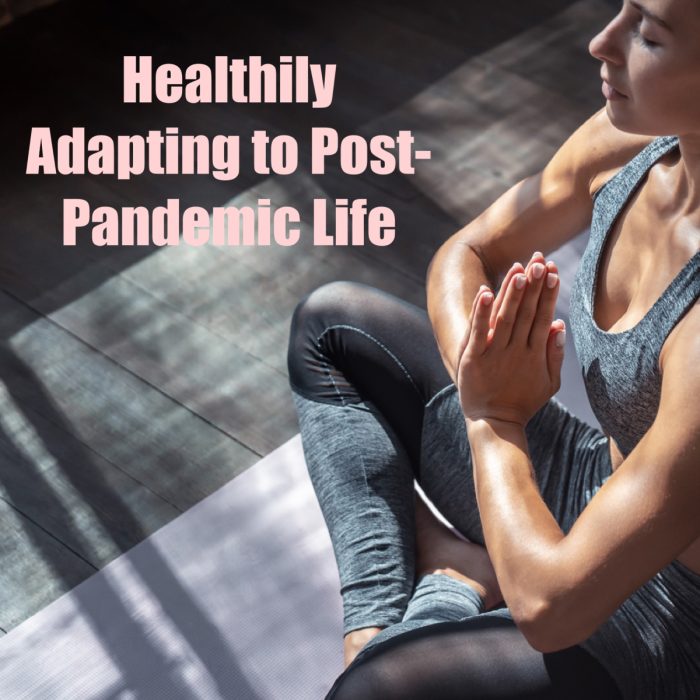
On May 5th, 2023, the World Health Organization (WHO) announced that Covid-19 is no longer considered a global health emergency. Masks are optional. Quarantines are a thing of the past. Most establishments have reopened to full capacity, and the assumption is that life will go back to normal pre-pandemic ways. However, many would argue that the pandemic is far from over and has left a secondary pandemic of poor mental health in its wake. Anxiety, depression, and substance use disorder rates have elevated since the pandemic started and continue to rise.
Are you still feeling off-kilter since the pandemic began? You’re not alone. It’s no surprise that our mental health is experiencing a residual effect. After all, many are still grieving the loss of loved ones, are jobless and suffering financial stress, or have long-term side-effects from Covid-19 or the vaccine. And the quarantine life forced a dramatic shift in our lifestyles, one of seclusion, increased screen time, and less physical activity. Our schedules were hijacked, and even though life is “back to normal,” many of us have maintained the unhealthy routines established during the pandemic.
Research shows that having a schedule gives us a sense of control, achievement, and purpose, especially during stressful or uncertain times. When something interrupts that routine, anxiety levels increase and motivation plummets.
If your schedule is suffering from a pandemic hangover, replace your unhealthy routine with a new one. Dust off your trusty day planner and start using it again. Add these five activities to your new schedule to mitigate damage to your mental health while adapting to post-pandemic life.
Social Time:
During the pandemic, widespread lockdowns left us completely isolated, sometimes even from our loved ones. Although quarantines are over, societal trends show people continue to avoid interacting with others and are more withdrawn. This isolation has increased levels of loneliness and depression for many people. To keep our mental health in check, it’s crucial to stay connected to the outside world. Whether it’s through phone calls, video chats, social media, or outside visits, staying in touch with family and friends will do wonders for your mental wellbeing. Join social groups, such as cooking classes, gyms, book clubs, and enjoy local festivals to meet new people and stay socially active.
Exercise:
Exercise stimulates the brain to release feel-good chemicals and endorphins that lower stress and depression, and boost self-esteem. Unfortunately, gym closures during the pandemic threw many people off their fitness game, but this doesn’t have to be the case. Gyms and fitness establishments have reopened and are ready for you to join. As a handy alternative, home-based exercise apps and videos are more popular than ever. With the click of a button, stream thousands of professionally developed workouts that train you safely and effectively, for less than you’d pay for a gym membership. Some are even free.
If the gym is not for you, but you require a more personal approach, there is another option to consider. Most personal trainers and fitness instructors have gone virtual. Your favourite trainer might be online just waiting for you to sign up with them!
Limit Screen Time:
Excessive use of technology has been linked to decreased feelings of psychological wellbeing, and increased levels of anxiety, depression, and loneliness. Unfortunately, since schools and work were primarily virtual during the pandemic, sitting for hours in front of the computer became unavoidable. What is shocking is that the rate remains elevated despite the Covid-19 restrictions being lifted. The trend is especially evident in children.
Some screen time remains necessary for job, school, and social reasons, but there are defensive tactics you can employ to avoid extra technology time. Instead of watching a movie or scrolling aimlessly through TikTok and YouTube videos, aim to spend time in nature, play board games with your family, or read a book. Give your brain and peepers some much needed rest.
Nutrition:
It all started with panic buying—stocking our refrigerators and pantries with longer-lasting foods (processed or frozen) to survive the pandemic.
Now that the panic is over, we can take a smarter approach to our nutrition. Healthy eating is essential for stabilizing mood, after all. Start by planning your meals for the week and making a list of groceries before you hit the market. Stick to whole, fresh foods, fruits and veggies, and lean meats.
Self-care
Fear of illness, job loss, and economic decline has led to increased levels of stress, depression, and substance abuse.
Find healthy ways to cope with overwhelming emotions. Try keeping a journal, spending time outdoors, yoga, meditation, talking to loved ones, or seeking professional help. It’s up to us to nurture our mental wellbeing, but there is always help when we’re struggling.
With these small adaptations to our schedules, we can gain back the control we lost during the pandemic and boost our mental health and wellbeing. Take care of yourselves, and don’t forget to keep reading!
💋 Lanie Mores